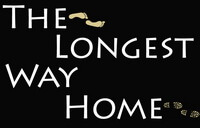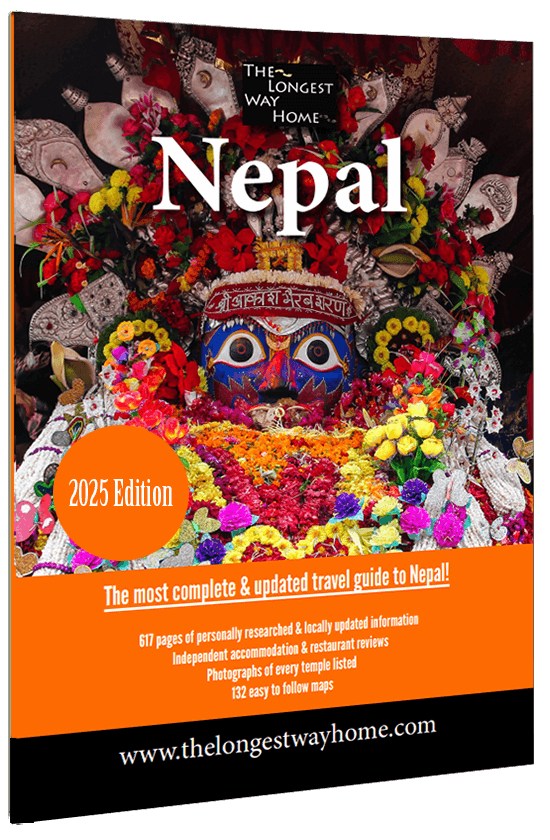Quick History of Lumbini
Lumbini is where The Buddha was born. Thusly making it one of the most important religious sites in the world, much like Jerusalem to Christians and Mecca to Muslims.

The birthplace of the Buddha is what most people know about Lumbini. Which is because there's not much there and it's a bit out of the way in terms of travel. Buddhism isn't everybody's cup of tea either. One also tends to upset a lot of folks if you start listing dates and events because a lot "experts" have differing views. Moreover, Buddhism lore can get a little complicated in its own right.
So on this page is the history of Lumbini written in a way that the most visitors can digest and in turn get more out of their visit to Lumbini!
History of Lumbini (Full)
As you know, Buddha was born here sometime around 623 BCE. The story of his birth is quite nice to know before you visit as you'll know what you are looking at when you visit!
Buddha's birth in Lumbini```html
The Buddha's parents were Hindu royals King Śuddhodana & Queen Mayadevi, whose family name was Gautama. Mayadevi left her home to follow tradition and give birth in her father's land. However, she gave birth along the way in ... Lumbini.
Mayadevi is said to have bathed in what is now known as Mayadevi pool before giving birth. She is then said to have given birth under a Sal tree while standing and holding a branch to Siddhartha Gautama, who would later become known as The Buddha.
Today, inside the Lumbini Temple or Mayadevi temple, you can see ruins of a temple that was built over the birth site. Indeed, the exact spot of The Buddha's birthplace is even marked out. Here's a large photo of inside Maya Devi Temple.
Sadly, some historical records show that Mayadevi died shortly after giving birth (seven days). Siddhartha is then said to have returned to his father's land of Kapilavastu (near Uttar Pradesh, Northern India) and was raised by Maya Devi's younger sister.
There's some controversy over the saying "Buddha was born in Nepal". Technically, Siddhartha was born in Nepal and achieved enlightenment in India. However, this is largely a Nepal/India issue and does not affect tourists.
Lumbini Disappears
In 403 CE, a Chinese pilgrim named Faxian Hien also visited the area and noted that Queen Maya had stopped in Lumbini to give birth to an heir (Faxian, Chapter 22).
Later, circa 630 CE, another Chinese pilgrim, Xuanzang Hsüan, visited Lumbini and noted that many of the monasteries had been hit by lightning and were in ruins. The site was yet to achieve much recognition and received little upkeep.
During the 9th century CE, Muslim invaders destroyed much of the area, as did Hindu invaders later.
It was not until 1895 CE that a German archaeologist named Alois Führer rediscovered Lumbini. The Ashokan Pillar was one of the first re-discoveries, along with a temple depicting the early years of the Buddha’s life.
What You Can See in Lumbini Today
Lumbini is broken up into a main complex called the Lumbini Development Zone & the Lumbini Museum, which is within it. The Lumbini Development Zone contains many Buddhist Monasteries and temples that you can visit. Inside the museum grounds, you can visit the places mentioned during Buddha's birth.

Primarily, you can go inside the Mayadevi temple and walk around what looks like an archaeological dig. There may be one or more temples that were built over the birth site, including the current one. Inside, in one area, there is a see-through panel in the ground that supposedly marks the exact birthplace.
Outside the temple is the Mayadevi pond where The Buddha's mother is said to have bathed. There has been some reconstruction, and no bathing is allowed today.
Just past the pond are some large Bodhi Trees covered in colorful prayer flags. There are also some old brick foundations of ancient temples nearby.
Beside the Mayadevi temple is one more interesting monument. The Ashokan Pillar. This was placed here by Emperor Ashoka upon his visit to Lumbini in 249 CE. He had converted to Buddhism after a particularly bloody and world-famous war. The Ashokan pillar is one of many dotted around India, telling his legacy with inscriptions. The inscription in Lumbini gives the town a tax-free status. Read more about the Ashokan pillar here.
The Ashoka pillar was also the first object to be rediscovered in the area in 1895 by archaeologists. Further excavations then revealed a brick temple that showed depictions of The Buddha's birth. The restored temple that you see today was opened on May 16, 2003.
Meanwhile, in the surrounding Lumbini Development Zone, new Buddhist Monasteries are continuously being built from all corners of the world. In 2021, it was announced that the development plan must be completed soon. This essentially means that all monasteries should be built ASAP. Most are, in fact, complete.
In 2022, the new Gautam Buddha International airport opened. However, no international flights are expected for a while, other than flights with overseas workers from Nepal to the Middle East.
A very brief history of the Buddha
As is the case with visiting Lumbini, someone may ask you a little more about what happened to Siddhartha Gautama (The Buddha). Here is a very brief history of his life.
Siddhartha stayed as the crown prince in his father's kingdom and is said to have had an arranged marriage at 16 before having a son. At the age of 29, Siddhartha left his palace to meet his subjects, despite his father's attempts at sheltering him. Along the way, Siddhartha met an old man. He was told that all people grew old, sick, and poor. This saddened him, and he took more trips to investigate further.
On one visit, he saw an ill man, a decaying corpse, and an ascetic (a person who abstains from worldly pleasure in an attempt to seek religious or spiritual goals). These sights depressed him, so Siddhartha left his palace to take on the life of a mendicant (a person who begs for charitable donations).
Siddhartha began to strive deeper into meditative teachings. But he was still not happy. He then began trying to find enlightenment through the deprivation of worldly possessions, including food, and by practicing self-mortification. At one stage, he only lived on a nut or leaf for a day. After nearly drowning, a childhood memory helped him reach a certain level of understanding that allowed him to concentrate more.
After finding a middle ground between self-mortification and concentration, he met a girl who mistook him for a spirit due to his emancipated condition and granted her a wish. Siddhartha then sat under a Pipal tree (Bodhi Tree) and vowed not to move until he found the answer he was looking for.
After 49 days, at the age of 35, he is said to have found enlightenment and thus became known as The Buddha (The Enlightened One).
In the 45 years that followed, The Buddha brought his teachings across Uttar Pradesh, Bihar, and southern Nepal. It is said that there were several assassination attempts on the Buddha's life.
At the age of 80, the Buddha announced that he would soon reach Parinirvana (final deathless state). Indeed, shortly after eating a meal given to him, either pork or truffles, The Buddha became ill. His final words were supposedly:
"All composite things pass away. Strive for your own liberation with diligence."
The Buddha entered Parinirvana in Kuśināra (Kushinagar, India). His body was cremated, and it is said that several relics were placed in monuments or stupas. One of which is believed to be a finger bone that is kept in the stupa at Boudhanath.
Visiting Lumbini
As mentioned at the start, this is not meant to be a guide of historical accuracies or in-depth discussion. It's meant to be a guide to hopefully make your visit to Lumbini that bit more interesting. Or at least give you, the traveler, an overview of the site's significance!
With that, here's the full travel guide to Lumbini, Nepal and a guide on how to get to Lumbini.
Download my guidebooks to Nepal
Liked this page? You'll love my books! They are hands on guidebooks that are better than the rest. Yes, really! In them I cover all attractions with step-by-step accuracy using well researched information, photographs and travel tested walking tours.
Available in print or digital editions - the best guidebooks for visiting Nepal.
Was this page helpful to you? If so please tell others!



